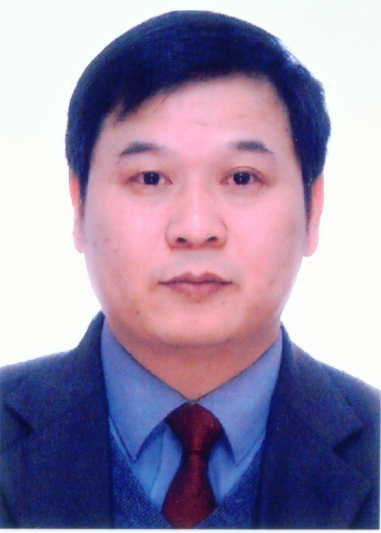报告题目:高核稀土、稀土-过渡金属簇合物的合成及磁热效应研究
报告人:龙腊生教授
报告时间:2018年6月11日(周一)上午9:00
报告地点:学院会议室C401
主办单位: 十大正规信誉娱乐平台
报告摘要:
磁制冷技术,因其环境友好及高效节能等特点,一直是材料、能源等领域热点和前沿课题。然而,大规模的磁制冷材料的应用仍然面临着极大的挑战。主要原因在于:目前所合成的磁制冷材料的磁熵仍不够大,从而使得每次磁制冷循环所产生的温差小。基于磁热效应的影响因素,要获得大磁熵的高核稀土及稀土过渡金属簇合物,就是要:1)建立合成高核稀土及稀土-过渡金属簇合物的有效方法;2)调控高核稀土及稀土-过渡金属簇合物中金属间的磁交换作用。本文中,作者就如何建立有效的合成高核稀土及稀土-过渡金属簇合物以及如何了解并揭示高核稀土及稀土过渡金属簇合物磁相互作用作一简要的阐述。
报告人简介:
 龙腊生,厦门大学化学与化工学院、固体表面物理化学国家重点实验室,教授,博士生导师,厦门大学特聘教授。安徽师范大学学士(1986),兰州大学获硕士(1989),中山大学获博士(1999)。2005年5月至2006年5月,日本分子科学研究所高级访问学者(JST)。主要研究方向为:1)高核稀土及稀土-过渡金属簇的合成与磁性;2)介电、铁电及导电材料设计与合成。主持过科技部973项目、国家基金重点项目等,作为研究骨干成员参与基金委创新研究群体以及重大研究计划重点项目等。已在Acc. Chem. Res., Proc. Natl. Acad. Sci. USA, J. Am. Chem. Soc., Angew. Chem. Int. Ed., Adv. Mater. 等杂志上发表研究论文160余篇。相关工作被美国《化学工程新闻》 (C&EN 2007, May 21; C&EN 2007, October 29; C&EN 2017, January 02)、Nature (2007, 447, 1035)、Nature Nontechnology (2007, 2, 388-389)、Chemical Science (2009, May 14) 、美国化学会Heart Cut (2002, October 14,www.chemistry.org) 以及著名网站Physorg.com和physics inventions选为研究亮点进行了报道。曾获全国百篇优秀博士论文指导教师奖。现任:中国晶体协会理事,中国《无机化学学报》编委,美国《Cryst. Growth Des.》编委。
龙腊生,厦门大学化学与化工学院、固体表面物理化学国家重点实验室,教授,博士生导师,厦门大学特聘教授。安徽师范大学学士(1986),兰州大学获硕士(1989),中山大学获博士(1999)。2005年5月至2006年5月,日本分子科学研究所高级访问学者(JST)。主要研究方向为:1)高核稀土及稀土-过渡金属簇的合成与磁性;2)介电、铁电及导电材料设计与合成。主持过科技部973项目、国家基金重点项目等,作为研究骨干成员参与基金委创新研究群体以及重大研究计划重点项目等。已在Acc. Chem. Res., Proc. Natl. Acad. Sci. USA, J. Am. Chem. Soc., Angew. Chem. Int. Ed., Adv. Mater. 等杂志上发表研究论文160余篇。相关工作被美国《化学工程新闻》 (C&EN 2007, May 21; C&EN 2007, October 29; C&EN 2017, January 02)、Nature (2007, 447, 1035)、Nature Nontechnology (2007, 2, 388-389)、Chemical Science (2009, May 14) 、美国化学会Heart Cut (2002, October 14,www.chemistry.org) 以及著名网站Physorg.com和physics inventions选为研究亮点进行了报道。曾获全国百篇优秀博士论文指导教师奖。现任:中国晶体协会理事,中国《无机化学学报》编委,美国《Cryst. Growth Des.》编委。
代表性研究论文:
1) High-Nuclearity Lanthanide-Containing Clusters as Potential, Acc. Chem. Res., 2018, 51, 517.
2) Giant Room-Temperature Magnetodielectric Response in a MOF at 0.1 Tesla” Adv. Mater. 2017, 29, 1702512.
3) Insight into Magnetic Interaction in Monodisperse Gd12Fe14 Metal Cluster, Angew. Chem. Int. Ed. 2017, 56, 11475.
4) A Gigantic Molecular Wheel of {Gd-140}: A New Member of the Molecular Wheel Family, J. Am. Chem. Soc. 2017, 139, 18178.
5) Recent advances in the assembly of high-nuclearity lanthanide clusters, Coord. Chem. Rev. 2017, doi.org/10.1016/j.ccr.2017.10.023.
6) Magnetic Properties of a Single-Molecule Lanthanide-Transition-Metal Compound Containing 52 Gadolinium and 56 Nickel Atoms, Angew. Chem. Int. Ed. 2016, 55, 4532.
7) Photosensitizing Metal Organic Framework Enabling Visible-Light-Driven Proton Reduction by a Wells-Dawson-Type Polyoxometalate, J. Am. Chem. Soc. 2015, 137, 3197.
8) Beauty, Symmetry, and Magnetocaloric Effect-Four-Shell Keplerates with 104 Lanthanide Atoms, J. Am. Chem. Soc. 2014, 136, 17938.
9) Modulating the Rotation of a Molecular Rotor through Hydrogen-Bonding Interactions between the Rotator and Stator, Angew. Chem. Int. Ed. 2013, 52, 12602.
10) High–Nuclearity 3d–4fCluster–Based Chains as Enhanced Magnetic Coolers and Molecular Magnets, J. Am. Chem. Soc. 2012, 134, 3314.
11) A 48-Metal Cluster Exhibiting a Giant Magnetocaloric Effect, Angew. Chem. Int. Ed. 2011, 50, 10649.
12) Anomalous Dielectric Behavior and Thermal Motion of Water Molecules Confined in Channels of Porous Coordination Polymer Crystals, J. Am. Chem. Soc. 2011, 133, 5736.
13) Transition from One-dimensional Water to Ferroelectric Ice within a Supramolecular Architecture, Proc. Natl. Acad. Sci. USA, 2011, 108, 3481-3486.
14) Keeping the Ball Rolling-Fullerene-like Molecular Clusters, Acc. Chem. Res. 2010, 43, 201.
15) A Chiral 60-Metal Sodalite Cage Featuring 24 Vertex-sharing [Er4(μ3-OH)4] Cubanes, J. Am. Chem. Soc. 2009, 131, 6918.
16) Porous Coordination Polymer Crystal Containing One-dimensional Water Chains Exhibiting Guest-Induced Lattice Distortion and Dielectric Anomaly, Angew. Chem. Int. Ed. 2008, 47, 3376.
17) A four-shell, nesting doll-like 3d-4fcluster containing 108 metal ions, Angew. Chem. Int. Ed. 2008, 47, 2398.
18) Chiral Symmetry Breaking by Chemically Manipulating Statistical Fluctuation in Crystallization, Angew. Chem. Int. Ed. 2007, 46, 8475.
19) A Keplerate magnetic cluster featuring an icosidodecahedron of Ni(II) ions encapsulating a dodecahedron of La(III) ions, J. Am. Chem. Soc. 2007, 129, 7016.
1)